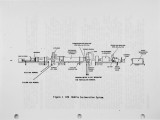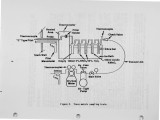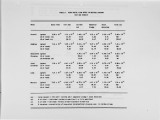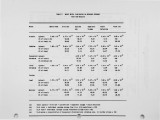| OCR Text |
Show The CCSEM data, presented in Table 5, confirm this evaporation/condensation mechanism. Lead appears in the finest particle sizes «10 u) of the kiln ash. It disappears in the cyclone ash and it reappears in the fine separator sludge particles. The greater depletion of the volatile metals in the cyclone ash compared to the kiln ash can be explained by an evaporation mechanism as follows. Cyclone ash consists of fine particles entrained into the flue gas stream. These fine particles closely approach the temperature of the flue gas and measurements of the flue gas temperature in the MIS by a high velocit~ shielded thermocouple have shown that the flue gas temperature is about 200 F higher the the kiln ash temperature. This higher temperature of the cyclone ash would result in greater evaporation of volatile metal compounds. Heavy Metals Material Balances In general, the material balances for individual metal species had excellent closures. With the exception of mercury, closure for the individual metal species ranged from 76% to 123% of the material measured in the waste stream. Only about 27% of the mercury was accounted for. The data is valuable for estimating emissions from other incineration units with similar air pollution control equipment. The material balances are presented in Tables 6 and 7. To aid engineering calculations and to present different perspectives, the data is presented in three ways. For each metallic species, the first row of the table presents the flow rates in g/sec of the metal in each solid residue. The second row shows the percent of the metal, which is retained in a particular solid residue, based upon the original amount of metal in the waste feed. The third row shows the percent of the metal, which is retained in a particular solid residue stream, based upon the total amount of metal accounted for in the residue streams. Arsenic -- Only 0.12% to 0.17% of the arsenic was emitted from the stack. Over 90% of the arsenic remained in the hot end of the unit being equally distributed between the kiln ash and the cyclone ash. The results of recent studies at the EPA Combustion Research Facility in Jefferson, Arkansas, were in general agreement with this data with the following normalized partitioning for arsenic: kiln ash about 90%, scrubber water about 5%, and stack gas about 5% [7]. Since arsenic forms many low boiling point compounds, this behavior seems to be anomalous and it requires further study. Cadmium and Lead -- The relative emission rates of cadmium and lead are very similar. Significant percentages of these metals were emitted from the stack gases. About 12% of the lead and 16% of the cadmium was emitted from the stack. This shows that air pollution eqUipment design is very important when feed materials 11 |





















